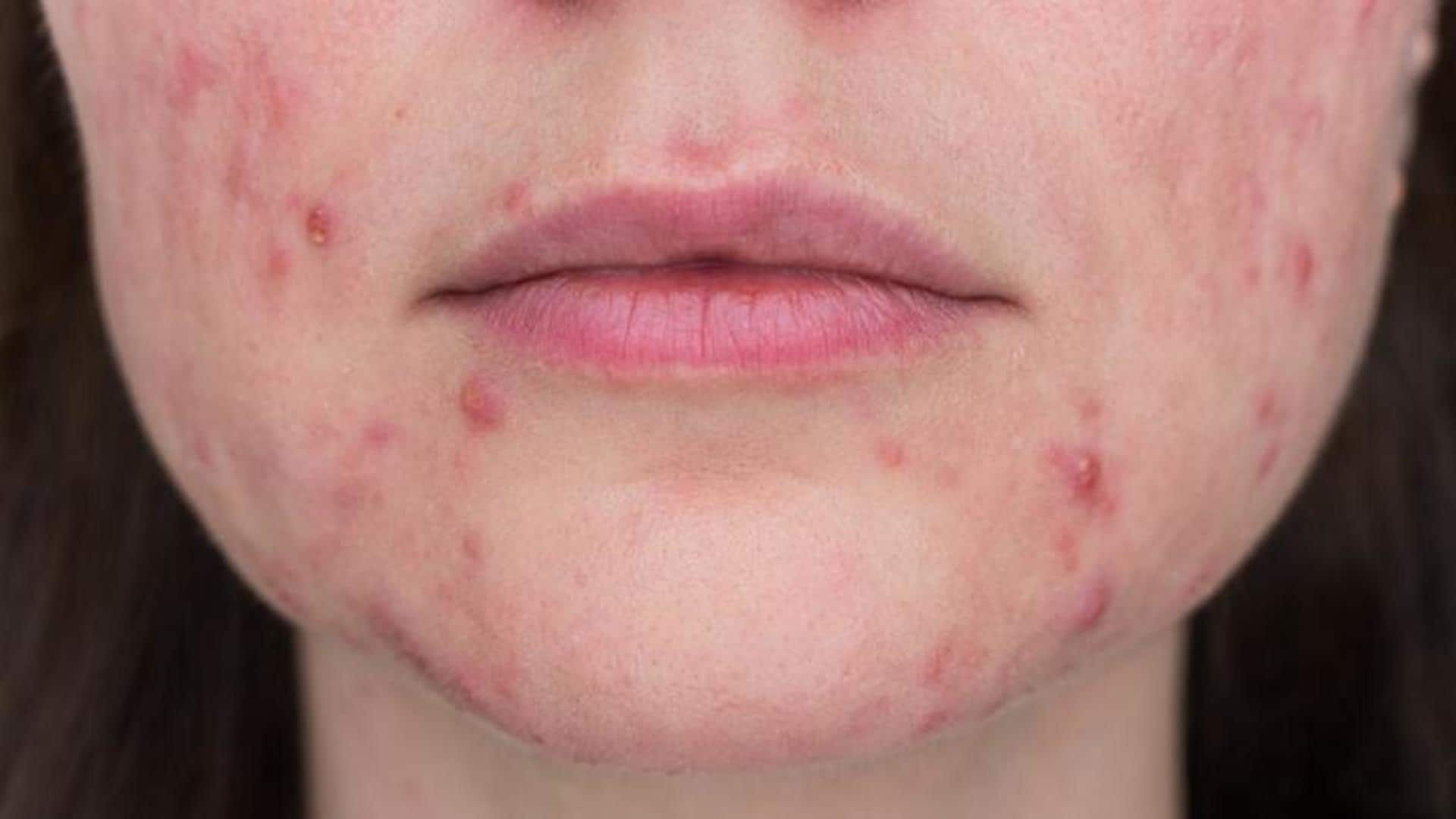
Papulopustular rosacea: Causes, symptoms, and prevention
What's the story
Also called inflammatory rosacea, papulopustular rosacea is a skin condition that causes whitehead pustules on your face which are basically pus-filled blemishes, and red, swollen bumps. It is usually caused due to sun exposure, high stress, alcohol consumption, or certain medications. It is recommended to manage your diet and seek the right medical treatment to reduce the symptoms and appearance.
Definition
What exactly is papulopustular rosacea?
Papulopustular rosacea features the condition of both acne and rosacea which leads to flushed red skin associated with inflammation, swelling, spots, and acne-like breakouts. Misidentified as acne, they often appear on the cheeks, chin, and forehead. The bumps which are also called papules and pustules develop deep within the skin which makes them stubborn and extremely difficult to get rid of.
Symptoms
What are the symptoms?
While the condition looks different on different skin types, most of the symptoms and characteristics are similar. The most common symptoms of papulopustular rosacea include inflammation, persistent redness, blushed-looking skin, red bumps on the skin, dry and rough skin, and permanently widened blood vessels. It can also lead to itching, whiteheads, burning sensation, thickening of the skin, and sensitive skin.
Cause
What causes the condition?
The triggers causing the condition can vary from person to person. However, according to research, some trends had been observed by doctors in patients suffering from papulopustular rosacea. The most common triggers include stress, anxiety, spicy food, high-intensity exercise, alcohol, hot drinks, temperature changes, certain cosmetic products, and some medicines. Foods high in histamines, UV rays, and extreme cold can also trigger the condition.
Diet
You can prevent it with a healthy diet
If you have papulopustular rosacea, make some changes to your diet and include foods that will help tackle inflammation and calm and relax your skin. Include foods high in healthy fats including omega-3 fatty acids in your diet like olive oil, nuts, pulses, seeds, and fish. Fiber-rich foods like probiotics, prebiotics, and fermented food like kimchi, and miso will balance the gut microbiome.
Home remedies
Homemade remedies to treat the condition
Adopt a gentle, preservative-free skincare routine and try using natural and homemade remedies. You can apply aloe vera gel to the affected area after washing your face with a mild cleanser and rinse it off after 30-40 minutes. You can also apply raw honey to your skin and wash it off after 30 minutes. Using green tea on your skin can also reduce inflammation.